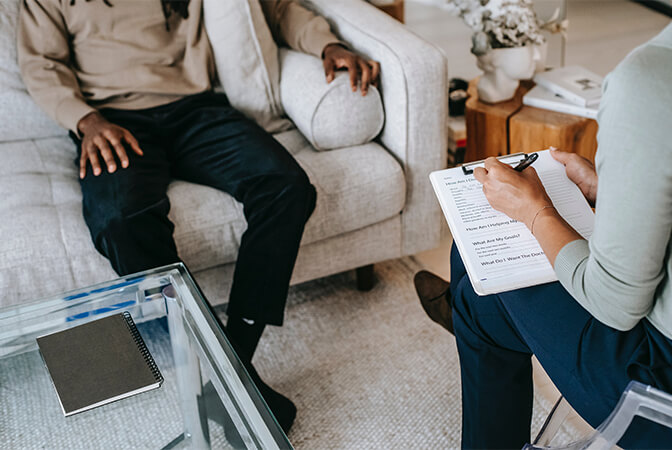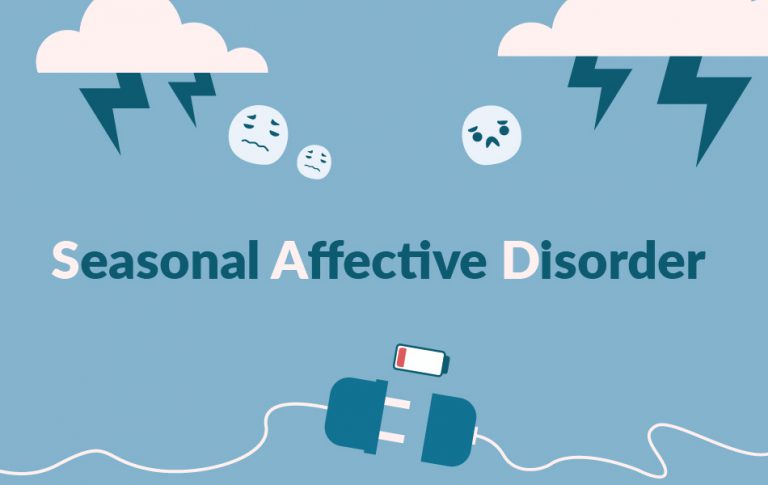Everyone experiences sadness at some point in their lives
Occasionally, this feeling disappears on its own.
Some people experience this persistent emptiness, unhappiness, and hopelessness regularly. A change in mood or difficulty completing daily tasks in the last few weeks may indicate Depression. Many people experience Depression. Depression can cause mild to severe symptoms and affect how you feel, think, and perform daily.
Although Depression often results in sadness, the feeling is much more severe than emotions that change over time. Depressive symptoms can last for months or years and make daily tasks difficult or impossible. Among other things, it can disrupt careers, relationships, self-care, and housework. Often, some of the subtle symptoms of this condition are the first signs that something is going on.

The following are some examples of what Depression may feel like to you:
- Inability to truly enjoy life: People with Depression may feel they can’t enjoy things they once loved. As a result, they can become trapped in a cycle of negativity and hopelessness.
- Difficulty in concentrating or focusing: It can be difficult to make decisions, read, or do work when one is depressed because one cannot think clearly or keep up with what is going on. As a result, focusing on the task at hand can be challenging, leaving individuals feeling overwhelmed and helpless.
- A feeling of hopelessness: Depression makes people feel that regaining happiness and feeling like themselves again is impossible. This can lead them to feel stuck in a cycle of despair and sadness, unable to break out of the misery they are experiencing.
- Self-esteem is often lacking: People suffering from Depression may feel worthless or as though they fail at everything they do. It is possible for them to dwell on negative events and experiences and fail to see their own positive qualities.
- Significant impact on sleep: Falling asleep at night or staying asleep all night can feel nearly impossible for some with Depression. Some people may wake up early and have trouble falling asleep again. Sleeping excessively may cause some people to wake up feeling tired or unrefreshed, even after sleeping extra hours.
- Low or non-existent energy levels: Even with enough sleep, some people have difficulty getting out of bed or feel exhausted all day. Some people may feel too exhausted to perform even the simplest tasks daily.
- There may be no appetite for food: Those suffering from Depression have difficulty eating anything and force themselves to do so. As a result, weight loss may occur.
- A craving for comfort foods: Depression can cause some people to avoid food, while others find comfort in food. As a result, they can gain weight by overeating comfort food cravings.
- Body aches and pains may be present: People who suffer from Depression may experience headaches, nausea, and body aches. Additionally, these symptoms may become more severe when a person is experiencing a depressive episode.
People tend to believe that being depressed is a choice or that they need to be more optimistic. Friends and family of someone suffering from Depression are often frustrated by their inability to understand why they can’t simply “snap out of it.” They may even suggest that there is no real reason for Depression.
A person living with Depression, however, cannot simply decide to stop feeling depressed. In contrast to the sadness or worry that comes with normal life, Depression can feel overwhelming and hopeless.
Types of Depression
It is important to note that Depression can take several forms. Therefore, understanding the different types of Depression can help inform appropriate interventions and therapies for those struggling. The types of Depression are as follows:
1. Major Depression
The name may sound daunting. However, major Depression (also known as clinical Depression) is the “standard” type. Depression of this type is among the most common mental health conditions doctors diagnose.
Those with this condition may experience five or more symptoms of Depression that last more than two weeks. Also, some people may experience recurrent feelings of major Depression, which can happen either monthly, yearly or even a few times in their lives.
2. Seasonal Affective Disorder (SAD)
Seasonal Affective Disorder (SAD) is a condition linked with mood changes and seasons. SAD is a type of recurring major Depression with a seasonal pattern and is most common during the winter months or holiday seasons that lead to the holiday blues.
3. Persistent Depressive Disorder (PDD)
Persistent depressive disorder (PDD), also known as Dysthymia, is less common than major Depression. It can last for at least two years. Whereas some symptoms may be less severe than those of major depressive disorder, other symptoms can be just as devastating and overwhelming.

4. Postpartum Depression
Postpartum and perinatal Depression is a type of Depression that happens during and after pregnancy. Contrary to the “baby blues,” it describes the typical stress and worry of caring for a newborn in the first few weeks after giving birth.
At the same time, postpartum Depression interferes with daily life and can persist for weeks or, in some cases, months. Additionally, a person with postpartum Depression experiences the common symptoms they may also experience:
- Feelings of numbness or disconnection from the baby.
- Worries about harming the baby.
- Feelings of guilt about not being a good parent.
- Withdrawing from loved ones.
- Cry more often than usual.
5. Psychotic Depression
Depression of this type includes episodes of psychosis or delusions in addition to major Depression. For example, a person can experience the following:
- Paranoia
- Difficulty understanding what’s real and what’s not
- Hallucinations
- Seeing, hearing or smelling things that others don’t
6. Premenstrual Dysphoric Disorder (PMDD)
PMDD is not a type of Depression but a condition that can cause severe Depression. It links to the menstrual cycle, which results in significant emotional liability.
It’s also similar to premenstrual syndrome (PMS) but with more serious effects. Premenstrual Dysphoric Disorder can cause severe irritability, Depression and anxiety leading up to a woman’s period. Symptoms usually go away 2 – 3 days after the period has begun.
There are various types of treatment options for Depression. They can include psychological treatments, medication and general relaxation techniques. Generally, different treatment options are often combined.
Treatments for Depression
Cognitive Behavioural Therapy (CBT)
Cognitive behavioural therapy aims to break negative thought patterns and also combines two treatment approaches such as:
Cognitive Therapy: The theory behind cognitive therapy is that things and situations are rarely at the root of problems; they are often the consequence of the importance people place on them. Therefore, it is important to change people’s perceptions of things.
Behavioural Therapy: Behavioural therapy uses various techniques, such as positive reinforcement and rewards, to encourage people to replace negative behaviours with more positive ones. It also focuses on changing the environment and the person’s thought processes to help them learn more constructive habits.
The main goal of cognitive behavioural therapy is to help people become more aware of their own thoughts, attitudes and expectations.
Antidepressants
Antidepressants have a mood-lifting effect that helps to increase motivation and manage depression symptoms. Often, medication is in combination with psychological treatments. However, it usually takes several days, or in some cases weeks, for the medication to start working.
It is important to regularly see a doctor whilst on antidepressant medication because different people react differently to it, and a doctor will be able to adjust the treatment when necessary.
Some many other treatments and strategies can be useful during treatments, such as:
Exercise
Walking, swimming, hiking, and many other forms of exercise may help to relieve or prevent Depression. Physical activities help to improve moods and increase energy. However, it may not be suitable for all types of Depression.
For example, people with major Depression may struggle to be physically active, and when a therapist or a loved one tells them to do more exercise, it may make them feel worse.
Light Therapy
The light at the end of the tunnel is light therapy, also known as phototherapy. This treatment helps treat and manage seasonal affective disorders (SAD). Light therapy involves sitting in front of a special bright light or sitting in the sun for about half an hour daily.

By connecting with someone like a mental health professional, you can gain a better understanding of why you are feeling the way you do and work through your emotions in a safe and healthy way. It can help to reduce the symptoms of any mental health issues and put you on the path to better mental health.
Depression help is available at psychiatric clinics with specialists who can guide and support you to regain control of your situation and achieve mental and emotional wellness. At ZwavelStream Clinic, we specialise in treating Depression and offer our patients individualised care with the utmost confidentiality.
If you require assistance or guidance, please do not hesitate to contact us or reach out by visiting our website.







